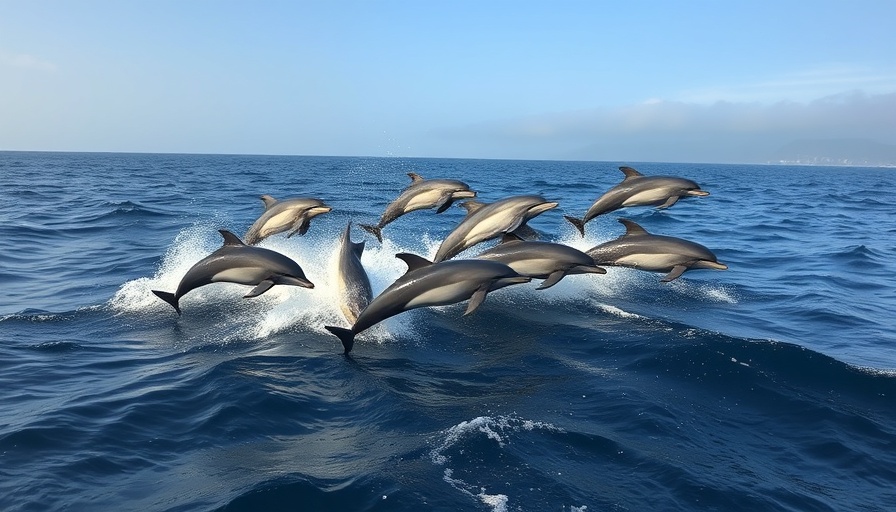
Exploring the Enchantment of Nature: A Rare Marine Marvel
A stunning display of nature unfolded off the coast of Monterey Bay, California, as a "superpod" comprising more than 2,000 dolphins was spotted frolicking in the waters. This remarkable event captivated onlookers and marine enthusiasts alike, showcasing the extraordinary sight of Pacific white-sided dolphins, Northern right whale dolphins, and even light grey baby calves, all captured on video by Captain Evan Brodsky from Monterey Bay Whale Watch.
Such super pods are a rare phenomenon in the maritime world, particularly for Northern right whale dolphins, which typically prefer to travel in smaller groups of 100 to 200. Local marine experts noted that witnessing such a large congregation is a significant event, especially during the winter months when visibility is best for dolphin watching.
The Science Behind Dolphin Behavior
Dolphins are known for their social nature, often forming close-knit pods that showcase a variety of behaviors, from playing and hunting to alerting one another of potential threats. According to the National Marine Sanctuary Foundation, this is not just a social outing; it enhances their survival as they navigate the vast oceanic environment. Capturing the essence of this dolphin gathering, Brodsky remarked on how the dolphins appeared as "flying eyebrows" when they leaped from the water, a testament to their unique morphology as the only dolphin species in the North Pacific without dorsal fins.
Why the Monterey Bay Matters
This part of California’s coastline is part of a national marine sanctuary, protecting a rich diversity of marine life. The sanctuary is known for its nutrient-rich waters, which foster a vibrant ecosystem that attracts not only dolphins but also whales and a plethora of other marine species. It serves as a prime location for wildlife enthusiasts hoping to catch a glimpse of these majestic creatures.
Opportunities for Observers and Conservationists
The appearance of these superpods can provide critical insights into the health of ocean ecosystems, indicating periods of abundance that can impact local conservation efforts. Marine biologist Colleen Talty commented on how spectators from across the globe venture to Monterey Bay specifically for such sightings, highlighting its significance as a hub for marine wildlife tourism.
Engaging the Community in Ocean Conservation
Events like these not only serve as marvels of nature but also pose an opportunity for raising awareness about ocean conservation. As dolphins cluster to feed, fend off predators, or socialize, they remind us of the delicate balance of marine life and the importance of protecting their environment. This sighting could inspire initiatives aimed at sustaining marine habitats and educating the public on the importance of ocean conservation.
Final Thoughts: A Shared Responsibility
As we reflect on the recent sighting of this astonishing superpod, it’s essential to recognize our role in preserving the beauty of Monterey Bay and similar ecosystems worldwide. Observations like these serve as a powerful reminder of what is at stake and how our actions can affect marine life. Protecting these habitats not only benefits dolphins and other marine species but fosters an appreciation for the intricate connections within our natural world.
 Add Row
Add Row  Add
Add 




Write A Comment